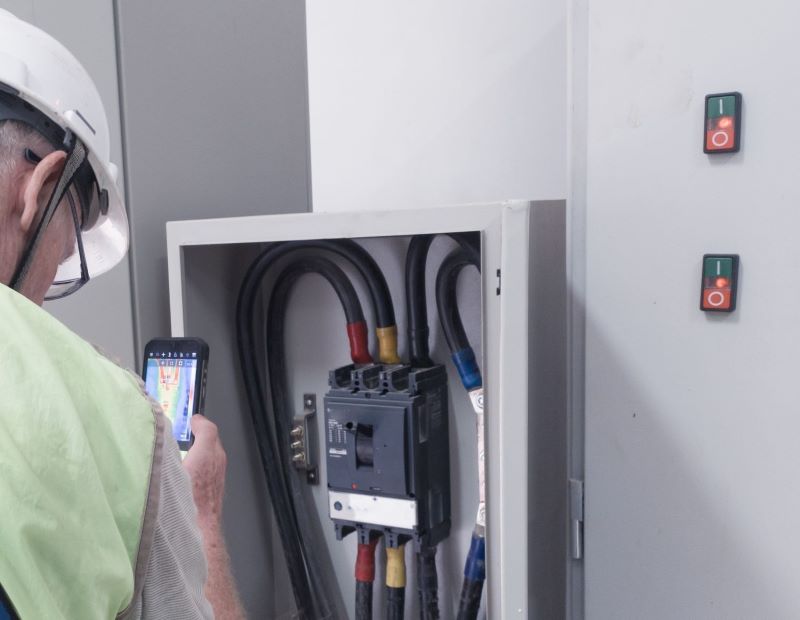The importance of an effective electrical maintenance programme for managing fire risk
Whilst electrical fires are among the most common cause of fire, an effective maintenance programme can reduce risk and improve business resilience.
Electrical fires are among the most common type of fire in the UK1. Checking that your electrical inspection, testing and maintenance programme is robust will go a long way to reducing the risk of fire. Our updated guidance can help ensure your programme is based on the latest trends and emerging risks from new technology in use today.
Causes of electrical fires
Zurich Resilience Solutions has published updated risk guidance on Electrical Installations and Equipment. Electrical distribution and equipment remain a common cause of fires across the United Kingdom, with 20,445 fires recorded in England alone. Our latest guidance is a response to the emerging trends and new technology we see in use when we work with customers. It is based on the latest standards and our experience of electrical fires.
Comprehensive electrical maintenance can prevent many of the common causes of electrical fires. This includes misuse, operating faults that occur over time such as the overheating of electrical contacts, deterioration of insulation and damage to cabling.
Life safety, compliance, disruption and reputational damage can result from poor maintenance
The risk to people’s safety is the most important reason to manage fire risk. Poor risk management can also result in not meeting your legal requirements, disruption to your organisation and reputational damage from not protecting people or being able to meet customers’ needs following a fire.
Problems in electrical maintenance programmes
Your electrical maintenance programme is key to reducing the risk and increasing resilience. It is not enough to just have robust policies and procedures. You must implement them effectively too. Our risk insight provides you with a checklist of ten questions to check how your organisation compares with good practice. Regulatory and contractor qualification requirements are there to ensure your equipment and installations begin and continue to operate at a safe level. Core items to consider when reviewing your electrical maintenance programme include:
- Electrical Installation Condition Report (EICR) action completion – how well do you manage and record decisions around identified remedial actions across all the different rating levels?
- Are EICR intervals appropriate and are informal inspections are being completed?
- Have the benefits of thermographic inspections been carefully considered?
- Is Portable Appliance Testing (PAT) completed at regular intervals to ensure no equipment develops a fault?
Regulations are generally designed to ensure that electrical installations are safe for users and that the risk of injury from an electrical installation is minimised. This is not necessarily the same as achieving an electrical maintenance programme that minimises the risk of fire. To move beyond compliance key areas to consider include:
- Thermographic inspections not only of distribution boards but other fixed electrical machinery.
- That electrical rooms are kept clear of combustible materials and appropriate fire stopping of electrical cupboards/plant rooms is in place.
- Clear audit decision trail around electrical maintenance and completion of remedial items.
- Informal visual inspections are completed as per recommended guidance from the Institute of Engineering and Technology (IET).
- Ensure that good practice is being followed in other areas such as solar panel maintenance.
Solar panels and electric vehicle charging infrastructure can also increase the level of risk if they are not installed or maintained appropriately.
Thermographic Inspections
One of the most common causes of fires in electrical installations is loose electrical connections. Thermal imaging cameras are an extremely effective tool at minimising this. Loose electrical connections generate heat via the increased electrical resistance, and this will show up as a ‘hot spot’ on a thermal camera image. Hot spots are easily detected by a thermal camera when a visual inspection might show nothing untoward. This allows the electrician to fix problems that might go unnoticed.

Regular use of these inexpensive cameras by a competent operative is an excellent way to spot developing faults early as part of a preventative maintenance programme. This will help reduce downtime and improve the efficiency of your electrical and mechanical maintenance programs.
Managing electrical fire risk
Electricity continues to be a significant cause of fires and it is important that suitable precautions are taken to minimise the fire risk. Our document is not intended to be a definitive list of controls but it does provide risk management guidance to inform and strengthen your electrical management programmes based on our experience of electrical fires. Download the document and use the checklist to assess the effectiveness of your electrical maintenance programme.
For more information about the services we offer and how they can help you with these issues please visit or contact us.



